The Southwest has so many spectacular photo locations that it can be hard to choose where to spend your time. That’s why I lead three different adventures there, my most recent this past August. That time I took the group Page, Bryce Canyon and Monument Valley. Here’s what we did…
Phoenix isn’t the most comfortable place in August, but the airport makes for a good jumping-off point in the area. After my assistant and I picked up our clients, we immediately headed north to Page, AZ, and (relatively) cooler weather. Since I my goal to pack as much photography into whatever time we have, after checking in to our hotel we made the short drive to Horseshoe Bend for sunset. It’s a great way to start the trip, and never disappoints.
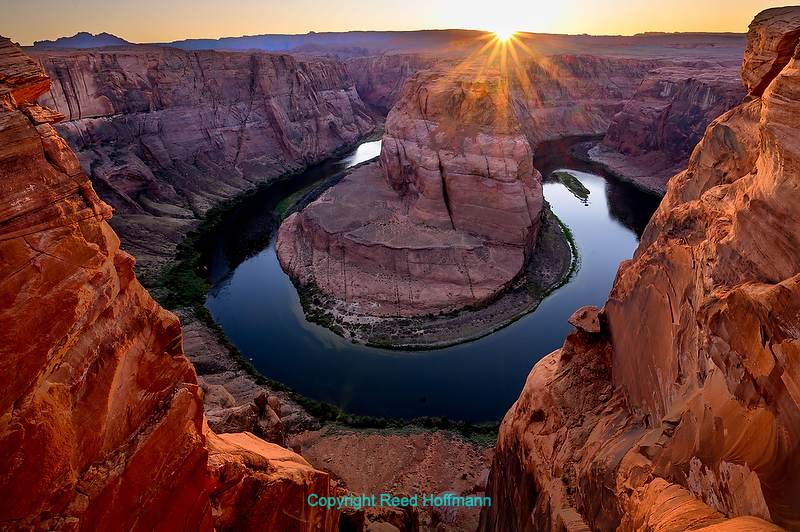
As I said, Horseshoe Bend never disappoints. However, there’s not a “best time” of day to photograph it, since the lower area is in shadow except for mid-day, when the light’s least interesting. I like it at sunset, and if underexposed properly at low ISO, you can bring back most of the shadow detail. Nikon Z 8, Aperture Priority, Sunny white balance, ISO 160, 1/15 at f/16 in Matrix metering, -2.3 EV, Nikkor Z 14-30mm f/4 S lens at 17mm.
Early the next morning, I have everybody up and out for a trip to the Toadstools. There are lots of pretty areas like this on BLM land (Bureau of Land Management) nearby, so if you can find them, there’s no issue with access (as opposed to private land or Navajo nation land).
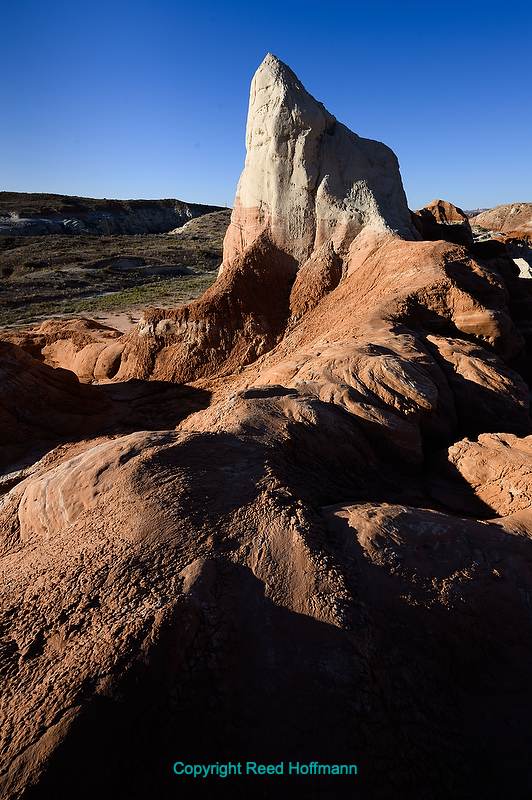
One of the formations at the Toadstools, in early morning light. Nikon Z 8, Aperture Priority, Sunny white balance, ISO 100, 1/160 at f/11 in Matrix metering, -0.7 EV, Nikkor Z 14-30mm f/4 S lens at 14mm.
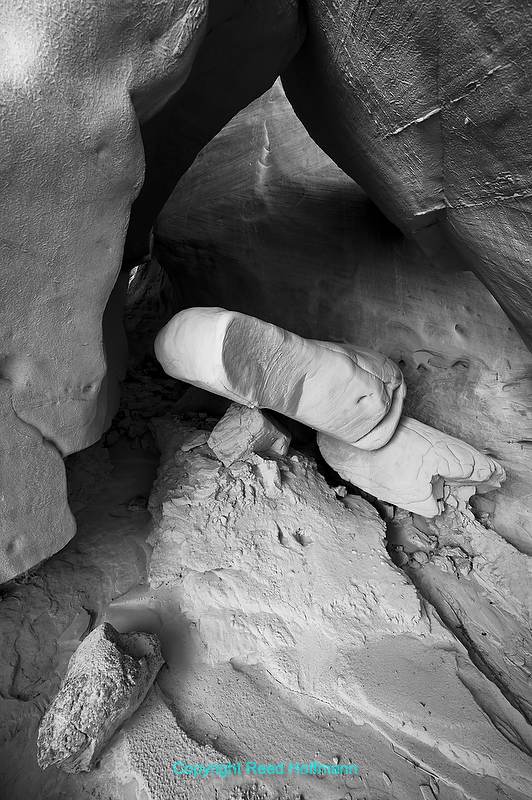
There are also some nice, more subtle scenes in shadw near the Toadstools. I’ll often switch to black-and-white if there’s not much color, something I did quite a bit on this trip. Nikon Z 8, Aperture Priority, Sunny white balance, ISO 160, 1/30 at f/9 in Matrix metering, 0.0 EV, Nikkor Z 14-30mm f/4 S lens at 15mm.
Returning to Page, we took a break for lunch (and naps!), before heading out again in early afternoon for Bryce Canyon National Park. Bryce always reminds me of the time I asked my mom, “Of all the places you and dad visited over fifty years of travel, which was your favorite?” Without hesitation, she answered, “Bryce Canyon.” Staying there through sunset, we then grabbed sandwiches and started the drive back to Page.
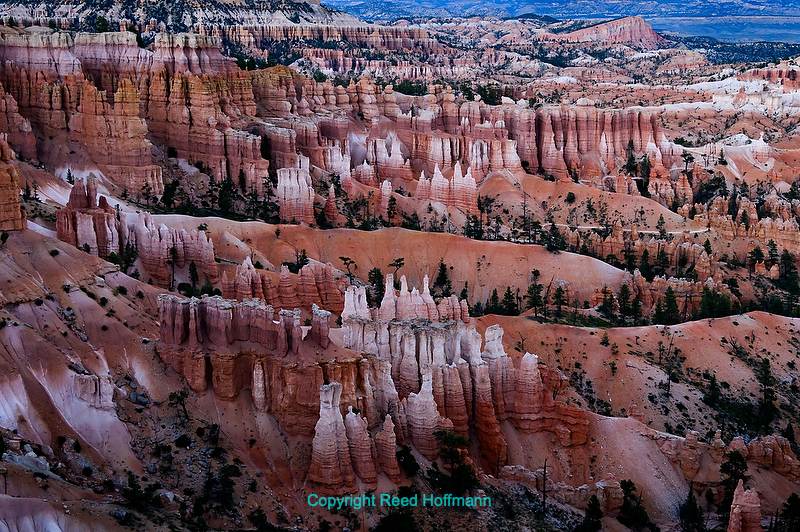
I hope this show you why mom was so impressed with Bryce Canyon National Park. Nikon Z 8, Aperture Priority, Sunny white balance, ISO 400, 1/40 at f/10 in Matrix metering, -1.3 EV, Nikkor Z 28-400mm f/4-8 VR lens at 39mm.
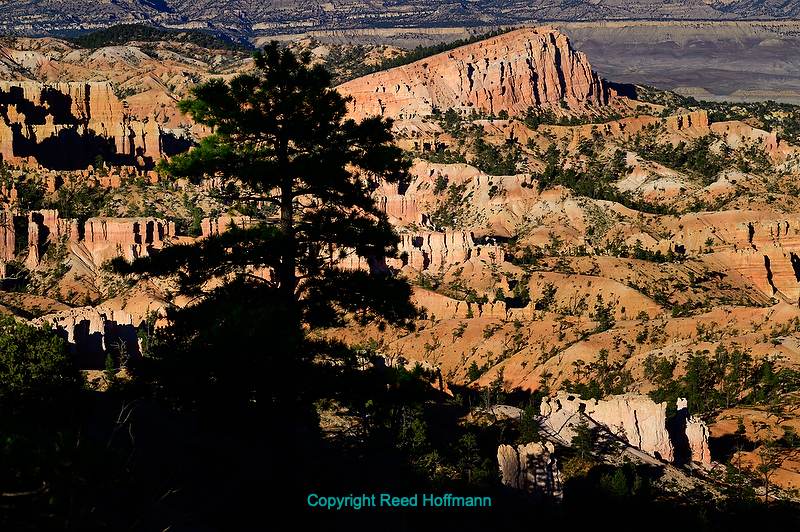
Arriving at Bryce near sunset let us take advantage of foreground shadows. Nikon Z 8, Aperture Priority, Sunny white balance, ISO 100, 1/250 at f/11 in Matrix metering, -1.0 EV, Nikkor Z 28-400mm f/4-8 VR lens at 120mm.
The second morning found us driving on a rough road to another of my favorite spots on BLM land, Wirepass Trail. About a mile down the trail is a nice slot canyon, which we spent close to two hours exploring. Returning to Page once more for lunch and a break, mid-afternoon had us once again on the move, this time to Cottonwood Creek Road.
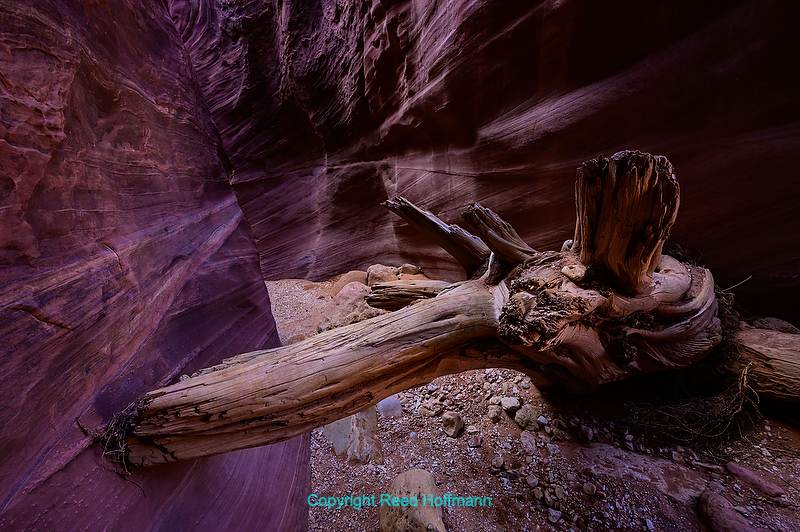
A log jammed inside the slot canyon at the end of Wirepass Trail. In confined spaces like this it can be hard to use a tripod, but today’s cameras do such a nice job of image stabilization that a tripod is often not needed. Nikon Z 8, Aperture Priority, Sunny white balance, ISO 320, 1/13 at f/11 in Matrix metering, -1.0 EV, Nikkor Z 14-30mm f/4 S lens at 16mm.
On a scouting trip to this area in 2017, an old friend showed me this road (thanks Leon!). Dirt and sometimes gravel, it’s a shortcut to Bryce Canyon – but only in distance, not time. On my previous two visits there, a regular car could get you to some beautiful spots. This time, even though we were driving two large SUV’s, it was a challenge. Heavy trucks loaded with boulders to shore up the creek bank had really torn up the road. We eventually reached Grosvenor Arch (about 50 miles in), and had a really nice night shoot. After that we decided to would be smarter to take the much longer 3.5-hr trip on paved roads back to Page, rather than risk getting stuck on the badly rutted dirt road late at night. Sadly, that will probably be my last time visiting that location, unless I’m driving a high-clearance four-wheel drive!

I’d researched Grosvenor Arch, and it turned out to be just as pretty as I’d hoped for this night shot (lit with three Lume Cubes). Unfortunately, the rough road getting there was so challenging I may never return. Nikon Z6 III, Manual exposure, Sunny white balance, ISO 3200, 15-seconds at f/4, Nikkor Z 14-30mm f/4 S lens at 18mm.
By the third morning, everyone had earned a break, so we slept in and left at 9:30am for Kayenta. The last part of our trip would be spent in the Monument Valley area, and Kayenta is the closest place that offers reasonably priced rooms (we spend so little time in hotels on these trips that I try not to book expensive places). After lunch in a local diner (the Blue Coffee Pot, nice, though the service can be slow), we drove straight to Monument Valley. On Navajo nation land, there’s a 17-mile gravel loop road that you pay a small fee to drive through the valley. That’s where we spent the rest of the afternoon, slowly exploring the great views there.
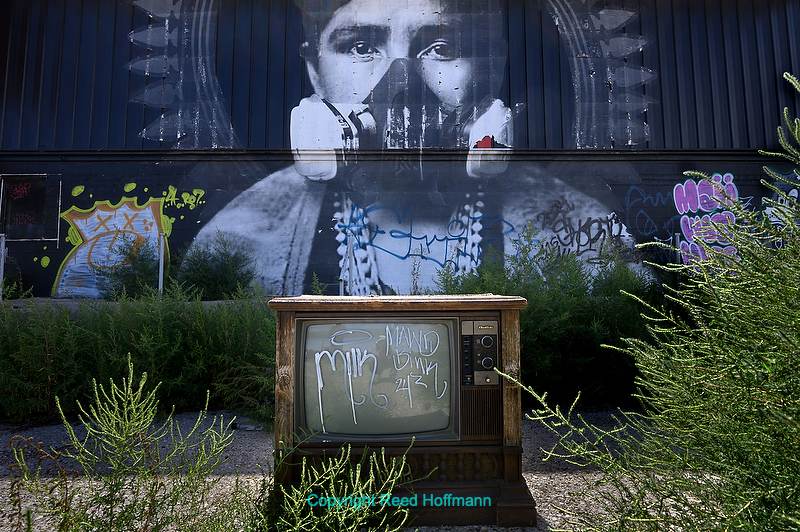
On the way to Kayenta we passed an abandoned convenience store and gas station, with lots of interesting artwork, often tying into the impact COVID had on the people there. Nikon Z 8, Aperture Priority, Sunny white balance, ISO 125, 1/125 at f/9 in Matrix metering, -0.7 EV, Nikkor Z 14-30mm f/4 S lens at 18mm.
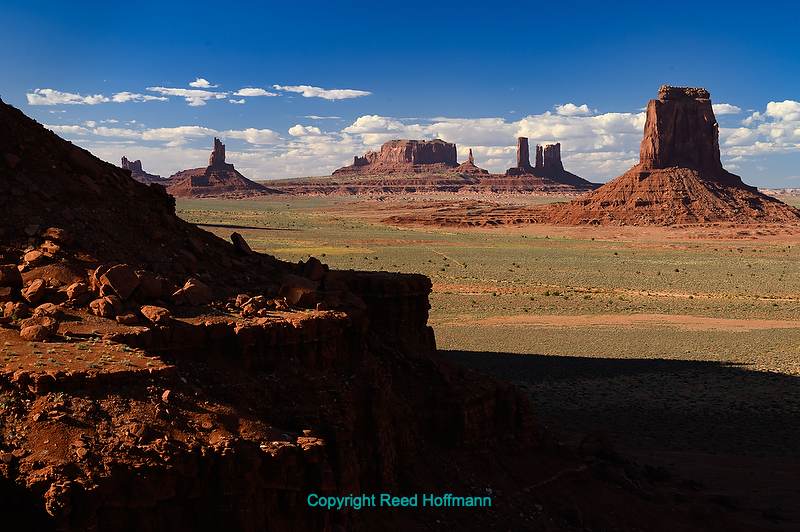
Monument Valley – what a great place for photography! Nikon Z 8, Aperture Priority, Sunny white balance, ISO 320, 1/125 at f/11 in Matrix metering, -0.3 EV, Nikkor Z 28-400mm f/4-8 VR lens at 55mm.
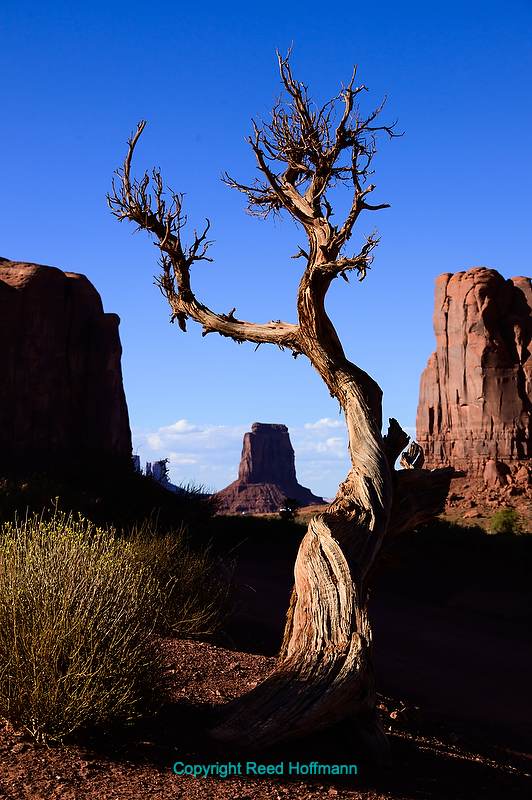
I’m a big fan of including interesting foreground subjects in my landscape photos. Plus, the late afternoon light gave us lots of nice shadows to work with in the valley. Nikon Z 8, Aperture Priority, Sunny white balance, ISO 100, 1/250 at f/10 in Matrix metering, -0.7 EV, Nikkor Z 28-400mm f/4-8 VR lens at 50mm.
That evening we had dinner in the hotel’s restaurant, then called it quits. The next 36 hours would be taxing, so I wanted everyone (including me!) to get a good night’s sleep.
We were back in the cars well before sunrise the next morning, to photograph one of the most iconic views in Monument Valley. Sunrise from the overlook si always spectacular. After that we dropped by the restaurant at Goulding’s Lodge for breakfast. In 1939, the John Ford film “Stagecoach” was released, with a young John Wayne in his first big role. It was the owner of Goulding’s that convinced Ford to come to Monument Valley to film (just a few iconic scenes), which was the general public’s first introduction to the beauty there.
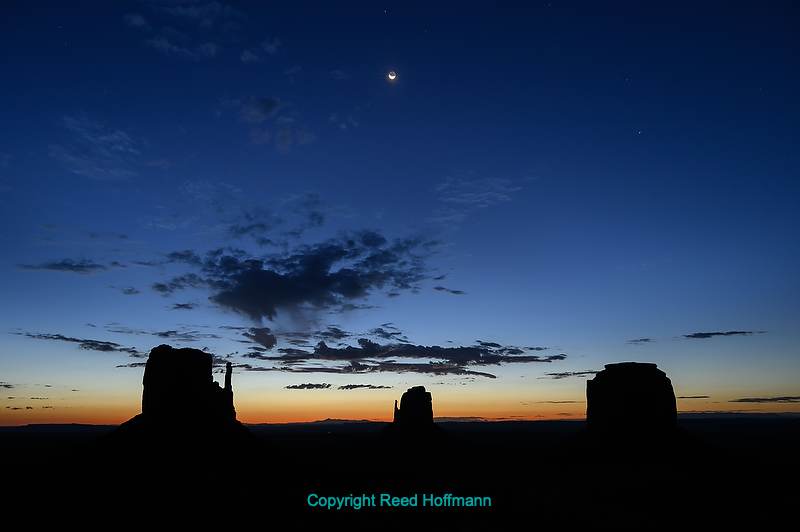
Sunrise in Monument Valley, with the bonus of a crescent moon rising. Nikon Z 8, Manual exposure, Sunny white balance, ISO 400, 10-seconds at f/9 in Matrix metering, 0.0 EV, Nikkor Z 28-400mm f/4-8 VR lens at 28mm.
After a few more stops in the area (one where a classic scene from Forrest Gump was filmed), we returned to Kayenta to rest up before our big final night.
About ten years ago I received an email from a young man in Monument Valley. He was a Navajo guide, and self-taught photographer with a love of the night. I then hired Quanah to guide us for two nights in the valley on my scouting trip in 2017. While I’d been doing light painting for several years prior, it was there that Quanah introduced me to the concept of “low level lighting.” Briefly, that means using very dim light sources in night photography. That’s since become my favorite way of making pictures at night.
We returned to Monument Valley about two hours before sunset. Grabbing sandwiches from the store, we ate them while watching (and photographing, of course!) sunset. An hour later, Quanah and his cousin Shay arrived, and after introductions we climbed into their two Suburbans to begin a five-hour night shoot in the valley.
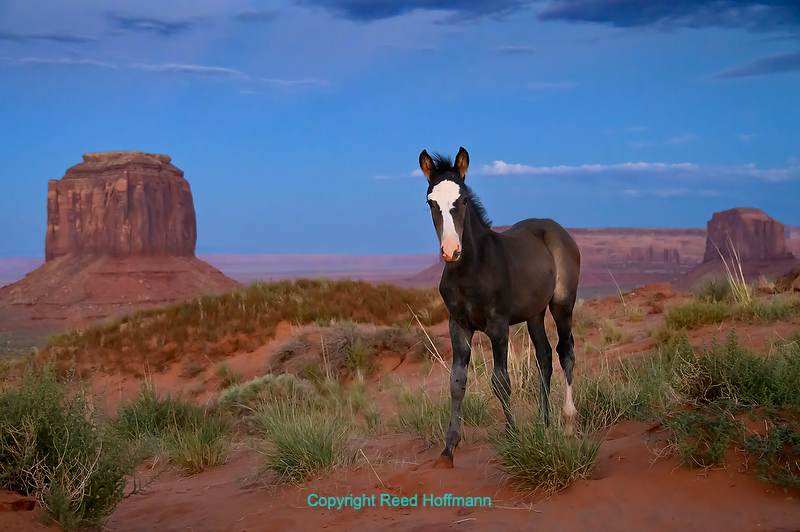
While enjoying the fading light after sunset, we spotted a group of horses walking up the road from the valley. Moving over to where they’d come out, we looked for positions that would place some of the iconic formations behind them. I’m constantly impressed with how good my cameras are in relatively poor light. Nikon Z 8, Aperture Priority, Sunny white balance, ISO 5000, 1/250 at f/5.6 in Matrix metering, -0.3 EV, Nikkor Z 28-400mm f/4-8 VR lens at 50mm.
The 17-mile loop road I mentioned above is open during daylight to anyone who pays the fee. However, to visit other areas of the valley, day or night, requires hiring a Navajo guide. Quanah and Shay took us to about a half-dozen different locations, where either Quanah or myself would light part of the scene with Lume Cubes. The night was comfortable, with just a light breeze, and we did our final shoot at 2am behind one of the “mittens,” silhouetted against a star-filled sky with the Milky Way above it. What a great way to end the trip!
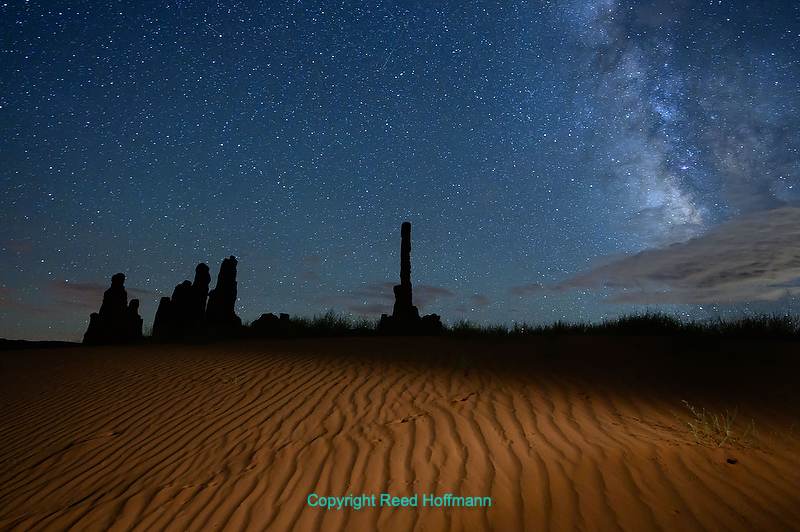
The Totem Pole, Milky Way to the right, with sand dunes in front (lit by one Lume Cube). Nikon Z6 III, Manual exposure, 3800K white balance, ISO 8000, 30-seconds at f/4, Nikkor Z 14-30mm f/4 S lens at 17mm.
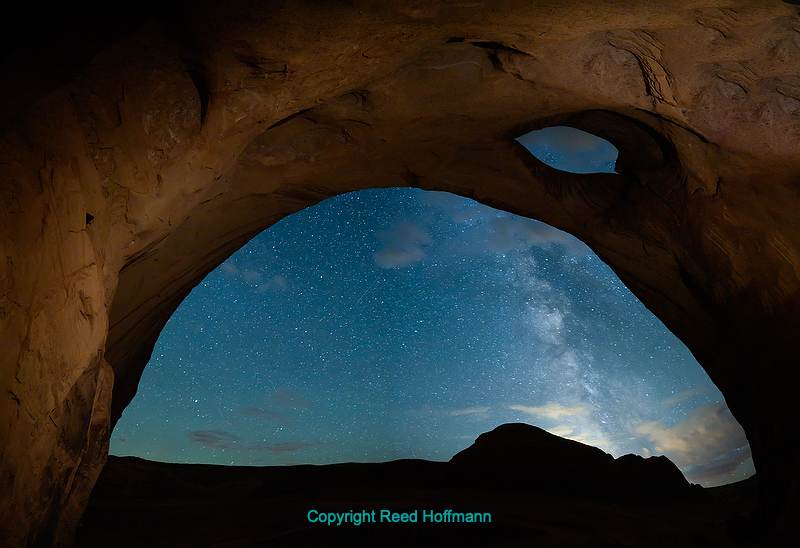
This is a three-frame panorama (vertical frames) from inside one of the caves that Quanah took us to. He climbed up and placed two Lume Cubes on shelves of rock behind us to add some light to the ceiling. Nikon Z6 III, Manual exposure, 3800K white balance, ISO 12,800, 30-seconds at f/4, Nikkor Z 14-30mm f/4 S lens at 14mm.
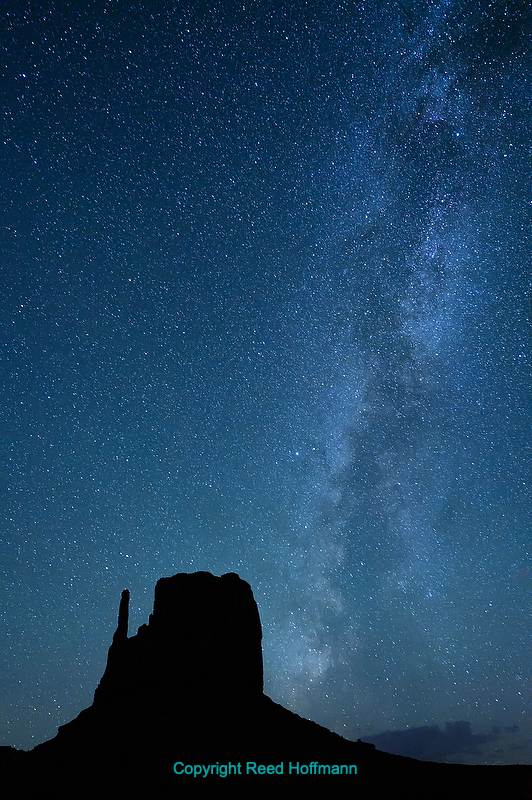
One of the Mittens, from behind, with the Milky Way. Nikon Z6 III, Manual exposure, 3800K white balance, ISO 10,000, 30-seconds at f/4, Nikkor Z 14-30mm f/4 S lens at 21mm.
Later that morning we loaded up for the drive back to Phoenix. The 4.5 hours passed quickly, as we had lots of stories to share from the previous four days. I’m planning to repeat this trip again in 2025, though with a few changes. I’d like to spend more time at Bryce, which means one night less in Page and adding a night in Bryce (for sunrise!). I’ll also take the Cottonwood Canyon Road adventure out, as it was a little too much adventure for those of us driving. But, of course, Monument Valley will stay, as will hiring Quanah and Shay once more. If you’re interested in joining me on this trip next year, let me know. I’ll also plan to do my other two Southwest trips, Sedona (including the Grand Canyon) and Moab (Arches and Canyonlands). As I said at the beginning, the Southwest is a great place for photography. If you haven’t been to these places, start making plans!
– you can see a complete gallery of my photos from the trip here –
(If you like this story, please share it with your friends and let them know about the links on photography that I post on my business Facebook page. You can also find my photos on Instagram. And if you’re curious about the workshops I teach, you can find them here. Finally, you can subscribe to this blog on my home page.)


Spectacular. Thanks again for a great South Dakota Badlands trip. One of the best.